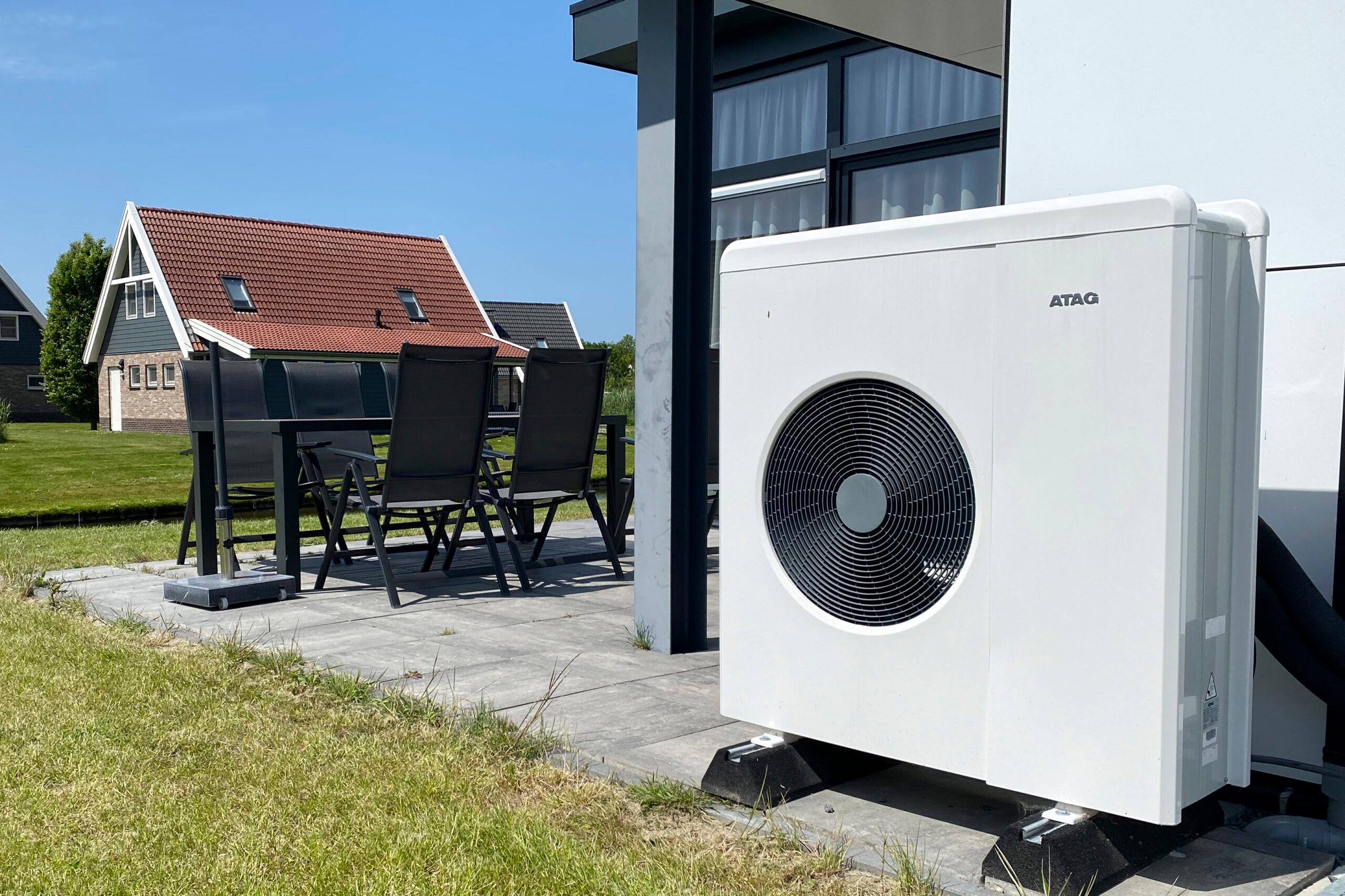
As Colorado races to cut its climate impact, environmental groups have united around all-electric heat pumps as the best replacement for natural gas furnaces.
Now it’s clear one major player isn’t entirely on board: Xcel Energy.
Colorado’s largest utility submitted a proposal Tuesday to slash the climate footprint of its natural gas system, which currently delivers methane-based fuel to 1.5 million customers across the state. The plan lays out strategies to comply with a first-in-the-nation law requiring gas utilities to cut climate-warming emissions 22 percent below 2015 levels by 2030.
At issue are the best methods to meet the goals. In the new plan filed with the state’s Public Utilities Commission, Xcel Energy calls for a multipronged approach with heat pumps playing a limited role. The company warns relying solely on electrification — the process of swapping gas for electric appliances — would be far more expensive and potentially overwhelm the electrical grid.
Meanwhile, climate advocates have come to the exact opposite conclusion.
A recent report from a coalition of environmental groups — Western Resource Advocates, the Southwest Energy Efficiency Project and the Natural Resource Defense Council — found a strategy built on incentives for electrification and energy efficiency projects would be the most cost-effective pathway for Xcel Energy to meet the 2030 target.
“The bottom line is if we’re investing ratepayer dollars in emission reductions, we want to make sure those reductions are real,” said Meera Fickling, a policy analyst for Western Resource Advocates.
The technical debate between Xcel Energy, state regulators, environmental groups and ratepayer advocates could not only determine the future of home heat in Colorado. It could reset the business model for the state’s largest utility, which has come to rely on its extensive gas network for billions in revenue it feeds back to Wall Street investors.
Xcel Energy isn’t ready to go all-in on electrification
It’s tough to overstate the size of Xcel Energy’s natural gas system.
Financial documents show the company owns more than 26,000 natural gas transmission and distribution lines in Colorado alone. Last year, the system generated nearly $2 billion in revenue for the company, helping generate a record $1.7 billion in profit for shareholders.
Xcel Energy outlined several different pathways for a more climate-friendly natural gas system in the proposal submitted to state regulators. The utility’s preferred plan would clean up its natural gas system without abandoning it entirely, which will hold hearings before making a final approval in 2024. To do that, it would use six tools to reduce carbon emissions: electrification, leak prevention, energy efficiency programs, buying “certified” natural gas, carbon offsets, recovered methane and hydrogen blending.
Each of those options is complicated and controversial.
Recovered methane, for example, refers to capturing methane fuel from diaries and landfills, then delivering the gas — which the utility describes as “renewable natural gas” — to stoves and furnaces. While the process still results in carbon dioxide emissions, it reduces on-site releases of methane — a potent climate-warming gas.
As for hydrogen blending, Xcel Energy has already announced a demonstration project to test the idea in a subdivision near Hudson, Colo., northeast of Denver. The plan, of which many residents were unaware, involves mixing the clean-burning fuel into the existing natural gas supply. A recent study prepared for state utility regulators warned the process could lead to more frequent gas leaks and appliance malfunctions.
The company estimates its preferred pathway to clean up its gas system would cost about $163 million annually, which would eventually be passed along to ratepayers. By contrast, Xcel Energy estimates an all-electrification option would come with a $472 million annual price tag.
Environmental groups have arrived at a far lower figure for electrification. Under a plan prepared by the environmental coalition in their recent report, Xcel Energy’s investments in electrification and energy efficiency programs would rise from about $56 million in 2024 to $169 million in 2028.
The plan from environmental groups further suggests investments in recovered methane and hydrogen blending would place a far greater burden on Xcel Energy ratepayers. That’s because estimates show heat pumps are roughly five times more cost-effective at turning ratepayer dollars into reductions in greenhouse gas emissions.
Fickling, one of the report's authors, said she’s still trying to figure out the underlying reasons for the vast differences.
Nevertheless, heat pumps play a critical role in Xcel Energy's preferred approach, which calls for new programs to switch 200,000 natural gas customers to electric appliances, accounting for the largest share of estimated emissions reductions.
A controversial heat pump study
At the same time, Xcel Energy has argued heat pumps face unique challenges in Colorado.
Ahead of submitting the clean heat plan, the company put out a press release announcing the results of a ratepayer-funded study conducted in coordination with the National Renewable Energy Laboratory in Golden.
According to the company, the research proved Colorado’s high elevation cut heat pump efficiency by 10 percent compared to a similar setup at sea level. Since heat pump performance degrades at temperatures below 40 degrees Fahrenheit, the utility claimed most Colorado homes would require “additional backup heating, either gas-fired or resistance electrical heating.”
Those results don’t square with heat pump installers currently working in Colorado. Bill Lucas-Brown, a building science expert who founded an electrification and efficiency company called GB3 Energy, said Xcel Energy’s description of heat pump performance in Colorado was deeply “misleading at best, self-serving at worst.”
“We've installed hundreds of heat-pump-only systems with no backup for all kinds of homes in Colorado with great results. It's all about meeting the home heat load with a properly sized cold climate heat pump,” Lucas-Brown said.
Xcel Energy and NREL declined to provide a copy of the study, which hasn’t been peer-reviewed or published.
Tyler Bryant, an Xcel Energy spokesperson, confirmed the findings were preliminary results based on laboratory tests on a single heat pump model. He said NREL and the company plan to follow up by testing the same system in Leadville, Colo., at altitudes above 10,000 feet.
NREL spokesperson David Glickson said he couldn’t comment on unpublished research. In an emailed statement, he said heat pumps are a cost-effective option for many homes and the national laboratory works with a variety of partners to assess different kinds of green energy technology.
“These partners include the federal government, utility providers, manufacturers, and community organizations,” Glickson said. “The objective for research on current and emerging heat pump technologies is working to inform key stakeholders and advance the technology in a broad range of environmental conditions and use cases.”
Meanwhile, climate advocates fear Xcel Energy is attempting to use NREL’s credibility to undermine public perceptions of heat pumps. Joe Smyth, a researcher with the Energy and Policy Institute, said the national lab should, at a minimum, publicize its own account of the results.
“If Xcel Energy has mischaracterized NREL research, NREL should correct the record and reevaluate whether Xcel can be trusted as a partner for any future projects,” Smyth said.









